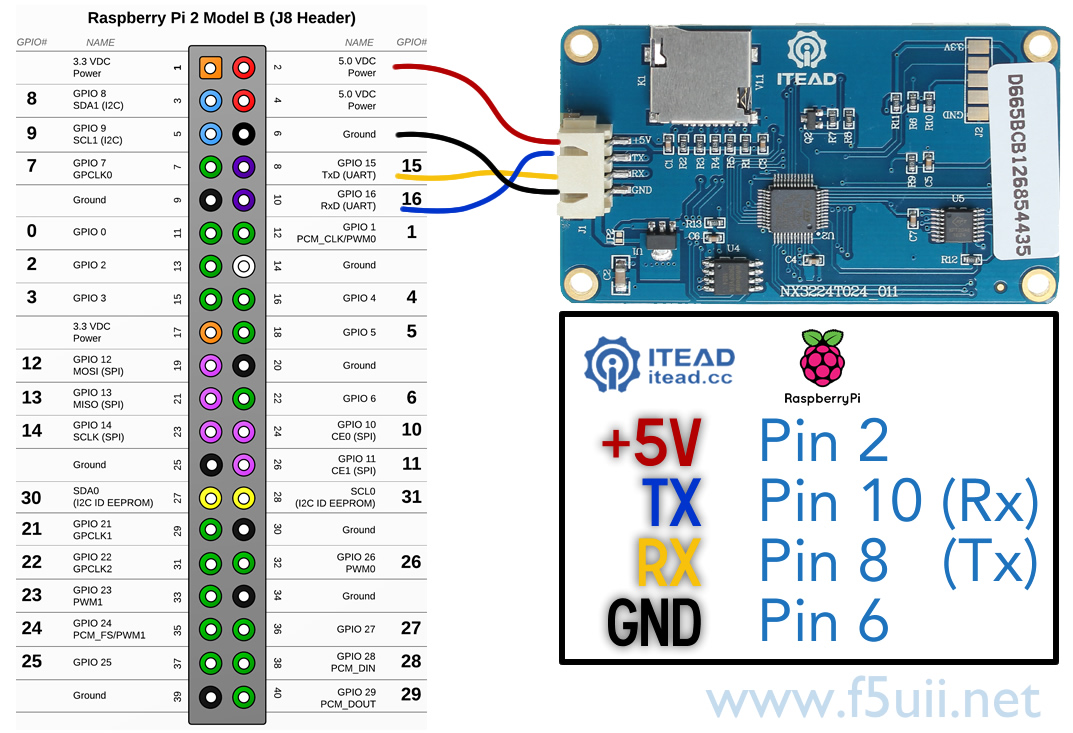

- #Test serial connection on raspberry pi install
- #Test serial connection on raspberry pi update
- #Test serial connection on raspberry pi driver
- #Test serial connection on raspberry pi software
- #Test serial connection on raspberry pi download
Serial 7-Segment connections for SPI Sample C++ Program language:c The display was connected to the Pi, via the Pi Wedge, as follows. Make sure to solder header pins on the 7-segment display before wiring. The Serial 7-Segment display is particularly useful for testing serial interfaces, because it can accept command from a UART, SPI, or I2C. A Raspberry Pi B+ or Pi 2 Model B single board computer.Ordinarily, this means the interface supports at most two peripherals, but there are cases where multiple devices can be daisy-chained, sharing a single chip enable signal. These represent SPI devices on chip enable pins 0 and 1, respectively. When it comes back up, log in and enter the following command language:bash
#Test serial connection on raspberry pi install
Python (spidev/smbus) Setupįollow the Configure Your Pi section in the Python Programming Tutorial to set up Python 3 and install pip. The I2C and SPI interfaces each require some additional configuration and initialization, which we'll cover in later sections. language:bashĮntering the following command will draw a table illustrating the configuration for the pins in the 40-pin connector. Run the gpio command shown below to view some information about the wiringPi version and the Pi that it is running on.

language:bashĪt this point, the library should work. This builds the helper files, modifies some paths in Linux and gets WiringPi ready to rock. build is a script to build Wiring Pi from the source files. Then pull the latest changes from the origin. This will make a folder in your current directory called WiringPi.
#Test serial connection on raspberry pi download
language:bashĪs long as you have Git installed, these commands should be all you need to download and install Wiring Pi. Then type the following for the Pi to remove all locations that remember wiringPi. * This Raspberry Pi supports user-level GPIO access.Įnter the following to remove the wiringPi and configuration files. Type: Unknown17, Revision: 02, Memory: 0MB, Maker: Sony
#Test serial connection on raspberry pi software
This is free software with ABSOLUTELY NO WARRANTY.
#Test serial connection on raspberry pi update
If you receive an output similar to to the following with the Unknown17, you'll want to update WiringPi on a Raspberry Pi 4 or above. To check what version you have, enter the following command. We highly recommend using Git to download the latest version. If git is not installed, enter the following into the command line. You'll need git (may be installed by default). If you are looking to update using a mirrored Wiring Pi with small updates to support newer hardware, we recommend checking out this GitHub repository. Luckily, Wiring Pi is included in standard Raspbian systems. This required users to download and install it. Wiring Pi is previously not included with early versions of Raspbian. The original wiringPi source " git:///wiringPi" is not available. The instructions from the official WiringPi homepage are now depreciated. Note: Wiring Pi is now pre-installed with standard Raspbian systems. If you would like alternative ways to set up your Pi, please refer to the following tutorials:
#Test serial connection on raspberry pi driver
Many different operating systems have been ported to the Pi, and the device driver infrastructure has also changed quite a bit.įor this tutorial, we'll be using a recent version of Raspbian (installed via NOOBS), and the wiringPi I/O library for C/C++ (or spidev/smbus for Python).

The software landscape for the Raspberry Pi has evolved considerably since the introduction of the Pi. SPI on the Pi allows for up to two attached devices, while I2C potentially allows for many devices, as long as their addresses don't conflict. The other two serial interfaces are the Serial Peripheral Interface ( SPI) and Inter-Integrated-Circuit bus ( I2C). You're probably already familiar with the UART serial port, which allows you to open a login session from a serial terminal application, such as PuTTY. The Raspberry Pi has three types of serial interface on the GPIO header.


 0 kommentar(er)
0 kommentar(er)
